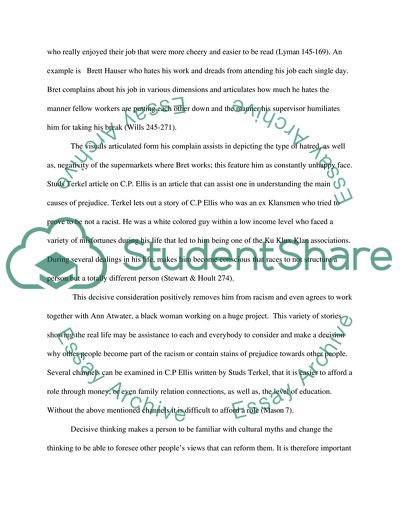Cite this document
(“Prejudice Causes and Approach Theories Essay Example | Topics and Well Written Essays - 1250 words”, n.d.)
Prejudice Causes and Approach Theories Essay Example | Topics and Well Written Essays - 1250 words. Retrieved from https://studentshare.org/psychology/1610196-i-put-my-requirement-in-order-instructions-box
Prejudice Causes and Approach Theories Essay Example | Topics and Well Written Essays - 1250 words. Retrieved from https://studentshare.org/psychology/1610196-i-put-my-requirement-in-order-instructions-box
(Prejudice Causes and Approach Theories Essay Example | Topics and Well Written Essays - 1250 Words)
Prejudice Causes and Approach Theories Essay Example | Topics and Well Written Essays - 1250 Words. https://studentshare.org/psychology/1610196-i-put-my-requirement-in-order-instructions-box.
Prejudice Causes and Approach Theories Essay Example | Topics and Well Written Essays - 1250 Words. https://studentshare.org/psychology/1610196-i-put-my-requirement-in-order-instructions-box.
“Prejudice Causes and Approach Theories Essay Example | Topics and Well Written Essays - 1250 Words”, n.d. https://studentshare.org/psychology/1610196-i-put-my-requirement-in-order-instructions-box.


